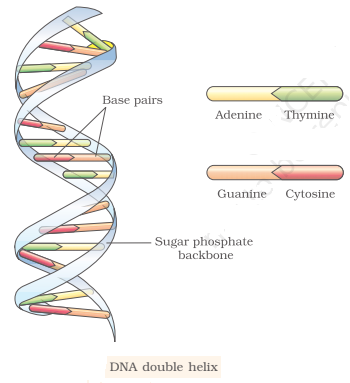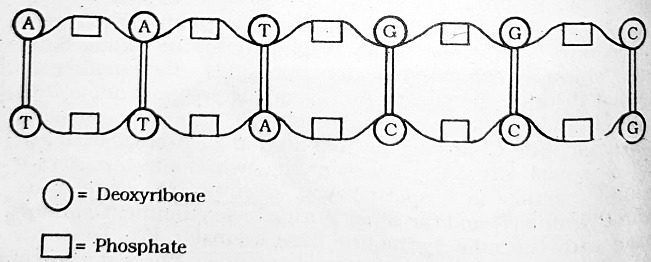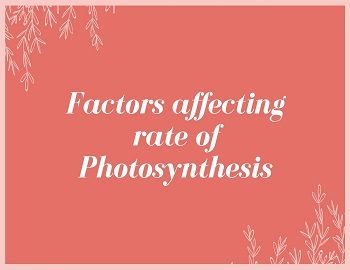Table of Contents
DNA and its Functions:
Deoxyribonucleic Acid (DNA) is a helically twisted double-chain mixed polymer of deoxyribonucleotides that represents the genetic material of organisms and the molecular basis of heredity. It is the most important constituent of a chromosome. In certain viruses, such as the AIDS virus and the tobacco mosaic virus, Ribonucleic acid (RNA) is the genetic material.

DNA is a large compound made of three smaller molecules bonded together. The basic unit of each of these three molecules is called a nucleotide. The three kinds of molecules are- sugar, phosphate and an organic base. This specific sugar is known as deoxyribose. This sugar contains only five carbon atoms as against six in common glucose. This is one of the main differences between these two kinds of sugar. All the nucleotides of a DNA are identical in respect of their phosphate group (phosphoric acid) and sugar contents, but they differ in their organic base, the molecular compounds of which are made of varying amounts of oxygen, hydrogen, nitrogen, and carbon. The organic base can be of two main categories, purine base, and pyrimidine base. The two kinds of purine bases are adenine (A) and guanine (G), and the pyrimidine bases are cytosine (C) and thymine (T).

Why DNA is regarded as the Genetic Material?
DNA is regarded as the genetic material that is transmitted from one generation to the next, because it fulfills the necessary conditions, which are as follows-
- This genetic material is extremely stable i.e. it can conserve itself from generation to generation.
- It is capable of replicating itself accurately.
- Its quantity is constant in all the cells of a species.
- The precise molecular composition is constant.
- It can direct the production of those molecules which carry out activities in the cells.
- Different parts of this genetic material perform different functions. The genetic material differs from one species to another and also from one individual to another. That these conditions are fulfilled have been proved by experiments, both in vivo (i.e. in living animals) and in vitro (outside of living animals in test tubes; vitro literally means glass).
Functions of DNA:
- DNA is the genetic material and carries hereditary characters from parents to young ones. This is achieved through its unique property of replication.
- There is a reshuffling of DNA molecules during gamete formation and their fusion. Crossing over occurs at the time of meiosis. Both the phenomena produce variations. Variations bring about individuality and adaptability.
- DNA enables the cell to maintain, grow and divide by directing the synthesis of structural proteins.
- DNA controls cellular metabolism through the transcription of selective RNAs and subsequent synthesis of specific enzymes with the help of RNAs.
- DNA contributes to the evolution of the organisms by undergoing gene mutations i.e. change in the sequence of base pairs.
- DNA brings about the differentiation of cells during development. Only certain genes remain functional in particular cells. This enables the cells having similar genes to assume different structure and function.
- It controls postnatal development through adulthood to death by its “internal clock”.
- Gene Therapy– There is a possibility of correcting defective heredity and disorders by changing genes or their expression.
- DNA Fingerprinting– Each individual carries specific hypervariable minisatellite DNA sequences. Studying these sequences is called DNA fingerprinting. It is used for resolving parenthood and the identification of individuals.









Comments (No)